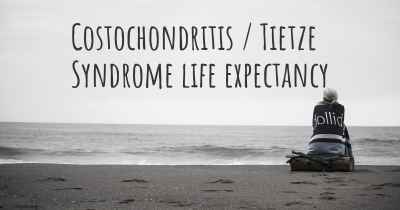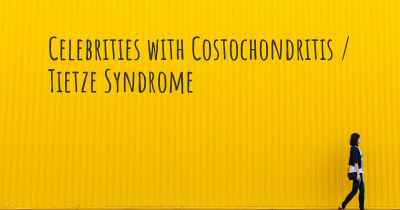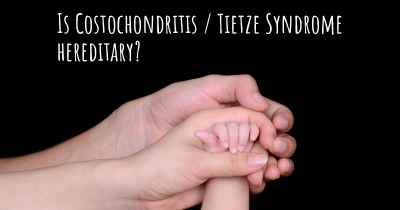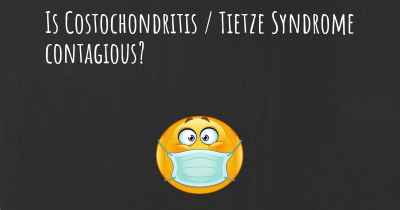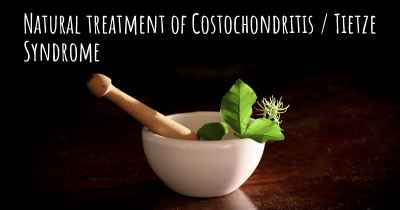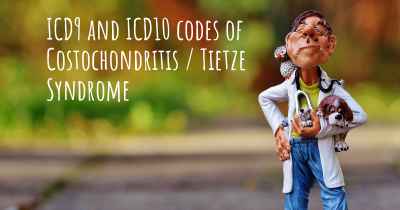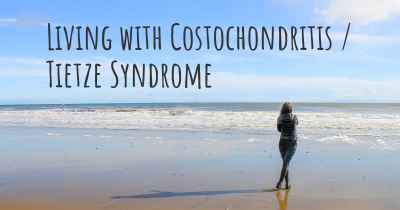Which advice would you give to someone who has just been diagnosed with Costochondritis / Tietze Syndrome?
See some advice from people with experience in Costochondritis / Tietze Syndrome to people who have just been diagnosed with Costochondritis / Tietze Syndrome
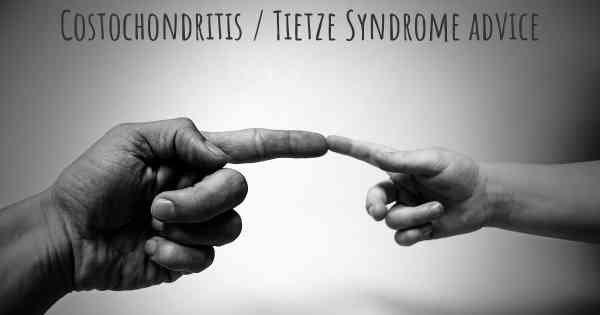
Advice for Dealing with Costochondritis / Tietze Syndrome
Being diagnosed with Costochondritis or Tietze Syndrome can be overwhelming and challenging. These conditions involve inflammation of the cartilage that connects the ribs to the breastbone, leading to chest pain and discomfort. While the exact cause is often unknown, it is essential to manage the symptoms and seek appropriate treatment. Here are some important pieces of advice to help you cope with Costochondritis or Tietze Syndrome:
1. Educate Yourself
Take the time to understand the condition and its symptoms. Research reputable sources, consult medical professionals, and join support groups to gain knowledge and insights. This will empower you to make informed decisions about your treatment and lifestyle adjustments.
2. Consult a Healthcare Professional
Make an appointment with a healthcare professional, such as a primary care physician or a rheumatologist, who can provide an accurate diagnosis and develop a personalized treatment plan. They may recommend pain management techniques, prescribe medications, or suggest physical therapy exercises to alleviate symptoms.
3. Manage Pain
Pain management is crucial when dealing with Costochondritis or Tietze Syndrome. Your healthcare provider may prescribe nonsteroidal anti-inflammatory drugs (NSAIDs) or pain relievers to help alleviate discomfort. Applying heat or cold packs to the affected area can also provide temporary relief. Additionally, practicing relaxation techniques, such as deep breathing exercises or meditation, may help reduce stress and pain levels.
4. Modify Daily Activities
Adjusting your daily activities can help prevent exacerbation of symptoms. Avoid activities that strain the chest muscles, such as heavy lifting or repetitive motions. Maintain good posture and use proper body mechanics when performing tasks. If necessary, consider using assistive devices or seeking help from others to minimize strain on your chest.
5. Practice Gentle Exercise
Engaging in gentle exercise can help improve flexibility, strengthen muscles, and reduce pain associated with Costochondritis or Tietze Syndrome. Consult with a physical therapist or a qualified fitness professional to develop an exercise routine tailored to your condition. Low-impact activities like walking, swimming, or yoga can be beneficial without putting excessive strain on your chest.
6. Use Supportive Measures
Supportive measures can provide relief and promote healing. Consider wearing supportive bras or compression garments to reduce strain on the chest area. Additionally, using posture braces or pillows while sitting or sleeping can help maintain proper alignment and alleviate discomfort.
7. Apply Topical Treatments
Topical treatments, such as lidocaine patches or creams, can provide localized pain relief. Consult your healthcare provider to determine if these options are suitable for your specific situation.
8. Seek Emotional Support
Living with chronic pain can take a toll on your emotional well-being. Reach out to friends, family, or support groups to share your experiences and seek emotional support. Consider joining online communities or local support groups where you can connect with others facing similar challenges.
9. Maintain a Healthy Lifestyle
Adopting a healthy lifestyle can contribute to overall well-being and potentially alleviate symptoms. Ensure you are getting enough sleep, eating a balanced diet, and managing stress levels. Avoid smoking and excessive alcohol consumption, as they can worsen inflammation and hinder the healing process.
10. Communicate with Your Healthcare Provider
Regularly communicate with your healthcare provider to discuss any changes in symptoms, treatment effectiveness, or concerns you may have. They can adjust your treatment plan accordingly and provide ongoing support.
Remember, everyone's experience with Costochondritis or Tietze Syndrome is unique, and what works for one person may not work for another. It is essential to work closely with your healthcare provider to find the most effective strategies for managing your symptoms and improving your quality of life.
Me and others who cannot eat those pills will have to find other ways. Hot/cold treatment, i eat magnesium for muscle relaxation, where it id legal i have heard of people getting better from medical cannabis.
Posted Jul 27, 2017 by Johanna 1550
